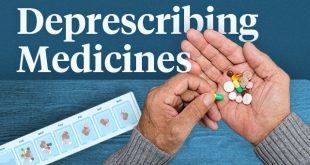 The comeback of colistin as “salvage therapy” for multi-drug resistant pathogens is on the rise. Colistin (also known as polymyxin E) belongs to the polymyxin group of antibiotics.1 It is available in two forms, colistin sulfate and colistimethate sodium (CMS).2
The comeback of colistin as “salvage therapy” for multi-drug resistant pathogens is on the rise. Colistin (also known as polymyxin E) belongs to the polymyxin group of antibiotics.1 It is available in two forms, colistin sulfate and colistimethate sodium (CMS).2
In our country, colistin is available as colistimethate sodium (CMS) for parenteral use, which on administration is hydrolyzed to colistin, the base component responsible for antibacterial activity.2 Colistimethathate is available in two dose strength: 1 million IU and 2 million IU.
The lack of universal dose unit (international unit IU vs. mg)2 difference in product labeling, expressing content either in CMS or base, has created a confusion while dosing colistin. In the United States, dosing is expressed as milligrams of colistin base activity, while in Europe, doses are often expressed as international units (IU) of colistimethate sodium or as milligrams of colistimethate sodium. While prescribing, this confusion may lead to under-dosing or overdosing of colistin, which may contribute to colistin-resistant pathogens, making colistin ineffective, or have potentially dangerous adverse effects, such as nephrotoxicity.
If we refer to Medscape for dosing of colistimethate sodium, the dose is 2.5-5mg/kg/day, stating that the dosage is expressed in terms of colistin base.3 To accurately prescribe this dose, the dosage would need to be converted from CMS to milligrams of colistin base activity using the following equivalency: 30,000 IUs = 1 mg colistin base.4 For example, consider a patient with a weight of 70 kg having creatinine clearance (CrCl) of 90 mL/min.
To prescribe 2.5 mg/kg/day colistin for UTI, the calculation is as follows:
Colistin base dose: 2.5 * 70 = 175 mg/day =175 * 30,000 IU = 5,250,000 IU CMS.
On the other hand, if we follow dosing according to IU of CMS, then in terms of CMS: 75,000 IU*70 = 5,250,000 IU CMS.5
From medication safety point of view, the Department of Drug Administration (DDA) needs to standardize product labeling, where equivalent colistin base dosage should be mentioned. Until this is done, clinicians need to be familiar with the product labeling of colistin products.
References:
1. Hauser AR. Antibiotic basis for clinicians.USA:Wolters Kluwer;2013
2. Lim L, Ly N, Anderson D, et al. Resurgence of colistin: a review of resistance, toxicity, pharmacodynamics, and dosing. Pharmacotherapy 2010; 30:1279–91.
3 Medscape: colistimethate sodium 2019 . [cited on 12 Sep 2019]. Available from: https://reference.medscape.com/drug/colistimethate-sodium-coly-mycin-m-colistin-342578
4 Ahern JW, Schnoor JB. Colistin: Potential for Dosage Error. CID 2012: 55: 1275
5. Singh M, Deorari AK. Drug Dosage in children.New Delhi: CBS; 2015: 50
 Medicosnext
Medicosnext




